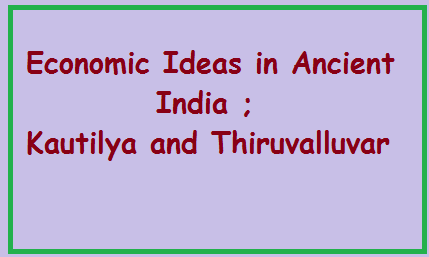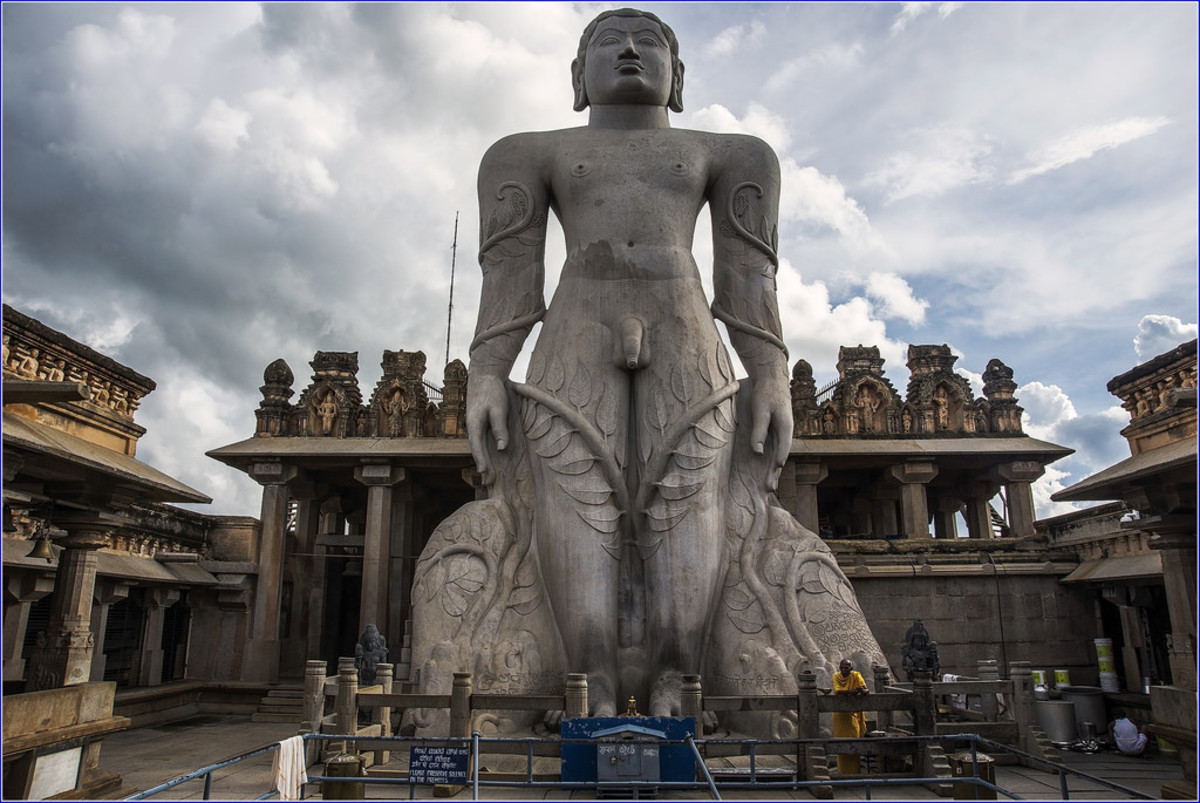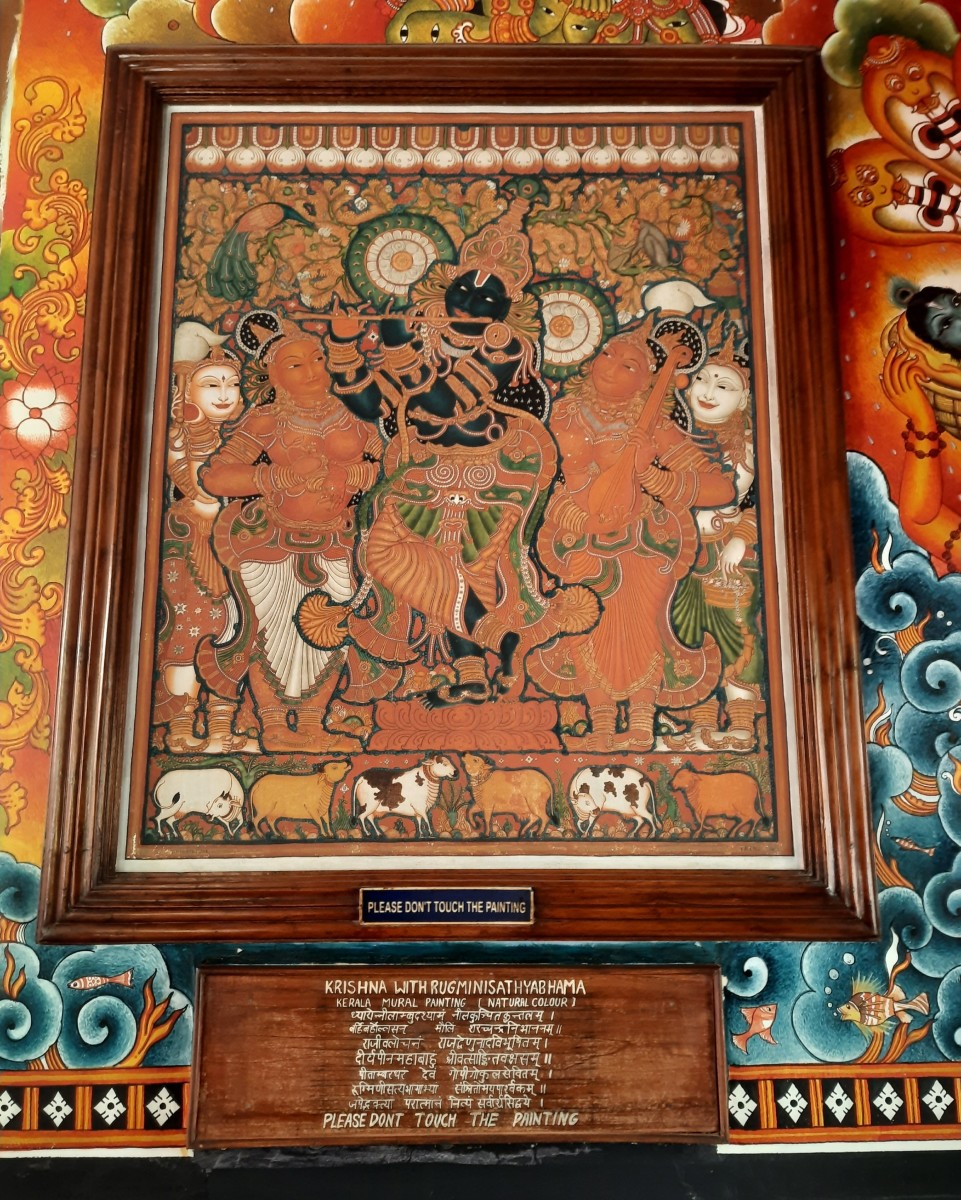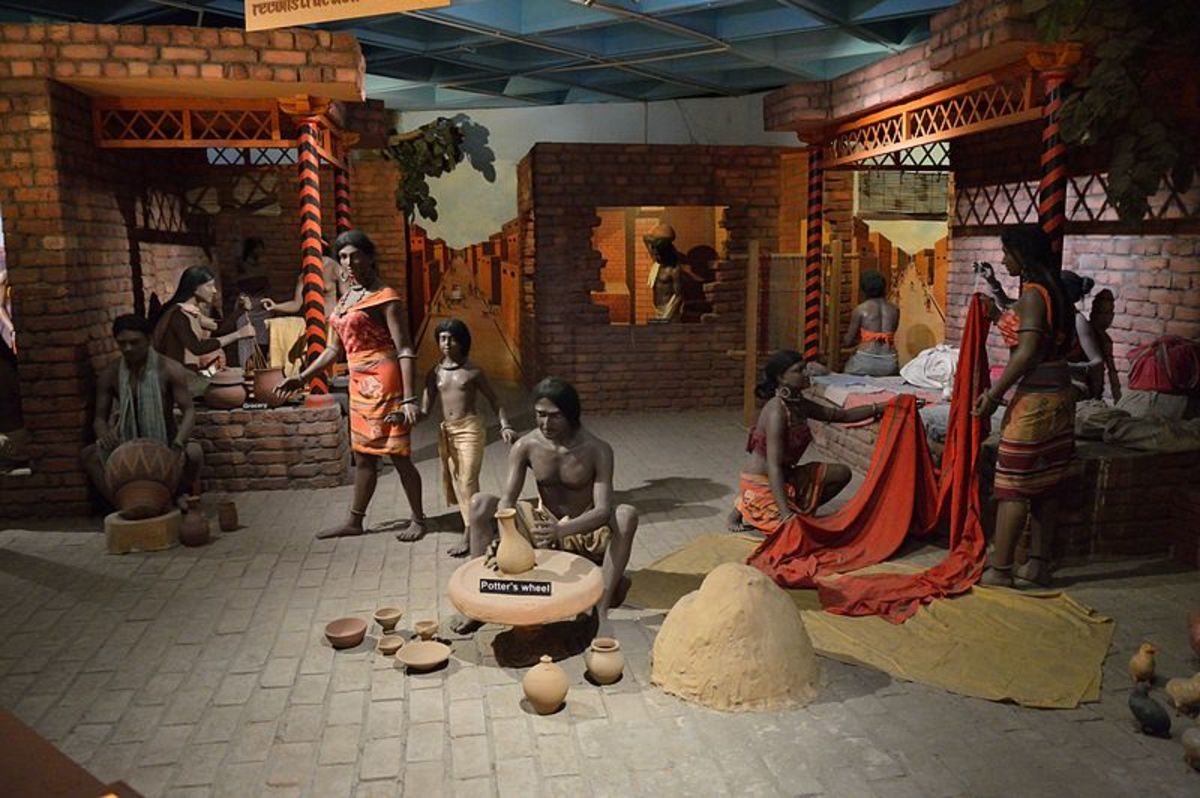Economic Thought in Ancient India; Kautilya and Tiruvalluvar

Introduction
Indian history disclose many important matters regarding the endeavor of any human aim or work. India had a great tradition and culture from the ancient time onwards. We can not complete the human history without mentioning the Indian history. India reasoned for giving birth for many classics, myths, knowledge, philosophers etc. There are many contributions from the part of Indian to natural sciences, humanities, trade and commerce etc from the early time onwards.
Here this hub is aimed to explain the role of ancient Indian society to the field of history of economic thought. There are two main writers who disclose the economic system of that time. They are Kautilya and Tiruvalluvar. The main sources of information regarding the history of economic thought in ancient India are Vedas, Upanishads, Ramayana, Mahabharata, Arthasasthra, Thirukkural etc. The ancient Indian history illustrated by different scholars from different angles. Some of them explains from the background that, ancient Indians weer highly influenced by spiritual life. so, religion and philosophy played a vital role. On the other side, some scholars argues that, the people were not much addicted to religion or spiritual way of life. because there existed discrimination among people. And also there were upper and lower classes in the society. Any way first of all this hub explains the social system of ancient India.
Ancient Indian Society
The ancient economic condition of India was a different one from any other civilizations raised in the world. the existence of caste system was the main feature of the society of that time. According to the caste practice, there will be four major classes and each of them function different social and economical functions. They were The Brahmins, The Kshatriya, The Vaishyas and The Shudras.
The Sudras were the lower caste people who functioned many things such as labors. They did lower level works and they were the suppressed people of that time because of many social bad beliefs. The Vyshyas were the class just above the Sudras. Their major activities were related to agriculture, trade etc. Majority of the Vyshyas were artisans. The Kshatriyas were functioned as administrative or rulers and soldiers. The Brahmins were the upper level class in the society. They were functioned the role of priests. In short, ancient Indian society was a structure built up of different classes. And these different classes played different role in the economy.
The main occupation of the ancient Indians was agriculture. Since it is the basis of Indian economy, it considered as a good occupation. Compared to other civilizations like Greek, Roman etc, there only fewer number of slaves. Further the hardness of the slavery system was also very less. The main source of revenue was from land as tax. There also existed world renowned industry like silk, cotton etc. So many traders from different parts of the world arrived in Indian continent for the purpose of trade. So, the international trade was highly activated in ancient India. The financial system of the ancient India was prohibited the practice of interest, but a very nominal rate of interest was charged on lending.
Since Indian history disclose about the origin of many religion, people were addicted to seek spiritual ways. So many religions originated from India like Jainism, Buddhism etc. So, the people gave more importance for ‘ethics’ and moral values. That actually helped to enrich the tradition of Indian society.
Kautilya and Arthasastra (4th Century B.C.)
Kautilya also known as Chanakya was an ancient renowned writer lived in ancient Indian during the 4th century B.C. He was in the position of prime minister of Chandra Gupta Mauryan emperor. He disclose the conditions of the society under Mauryan empire in his masterpiece ‘Arthasastra’. In which he deal with the social, political and economical conditions of that time. Following are the major ideas of Kautilya in Arthasastra.
The Economy
Kautilya used the word ‘Vartha’ to represent the science of economics. He also used the word ‘Arthasastra’ instead of using varta. Which consist of every field of human knowledge like politics, economics, ethics, national defense etc. Agriculture was the primary occupation of the society. So, the ancient Indian society was purely based on agriculture. Even though it was a labor based economy, the slavery system was rare. And the lower class people were mainly engaged in the agricultural sector. So, the specialization of labor worked well in the ancient Indian society. He disclose that ancient Indian people had a advanced concept on the value of commodities and the rules and regulations on trade.
Kautilya’s View on Wealth
Kautilya gives much importance about the role of wealth in human life.kautilya provides brief explanation on wealth. By wealth Kautilya means, it is aimed to satisfy the wants of the wealth owner itself, his family and also for the welfare of the society through doing charity. The ultimate aim of acquiring wealth must be for the charity (darma), love (kama), wealth (Artha) and Salvation (Moksha). So, in short the ultimate aim of acquiring wealth must not only for self gain but also for the social welfare.
Kautilya’s View on Public Economics
Kautilya’s Arthasastra disclose many advanced ideas on public economics or public finance. The main source of public revenue was through taxes. The administrative authority collected different taxes to enrich the wealth of the country. taxes were imposed on goods produced in the country and also from foreign trade. During that time high rate of taxes imposed on the importing of unnecessary commodities like luxury goods. Similarly, the public expenditure was mainly based for the national protection, social welfare etc. Major spending of the administrative authority was for national defense, public administration officials, expenses for army etc.
In short, Arthasastra of Kautilya is a valuable evidence for studying the ancient history of India. In which he clearly mentioned many things including economics, politics, public administration, army system etc.It is envisaged that during the ancient India, economic activities like trade, exchange, lending etc were highly activated. Compared to other civilizations existed in the world, the ancient Indian culture claims a different social system. Further there were many advanced economic ideas which strengthened the tradition of the country.
Thiruvalluvar and Thirukkural (3rd Century B.C. )
Thiruvalluvar was an ancient Indian philosopher who lived during the 3rd century A.D. The ideas of Thiruvalluvar are taken from his book “Thirukkural”. The economic ideas of Thiruvalluvar are dealing in the ‘Porutpal’ part of “Thirukkural”. The word 'Porutpal'used by Thiruvalluvar is the same meaning of Kautiy’s Arthasastra. Which means the science of economics.
Similar to Kautilya, he also gives more importance to agricultural sector. He gives more emphasis rain since it highly influence the agricultural sector. So, in short, Thiruvalluvar’s period of India was an agrarian based economy.
Agriculture
Thiruvalluvar highlights the significance of agriculture. He also suggest agriculture as the best productive economic activity. He was against the practice of absentee landlord system. He mingle moral or ethical values with agriculture. So, he says that, those who do work they will eat good food otherwise they will eat by subservient. He also support the charity works. He inspire people to give help for other in kind.
Acquisition of Wealth
Thiruvalluvar highlights the importance of acquisition of wealth in the human life. here also he mingled it with ethical values. The acquisition of wealth must be in good means. He is extremely attacks the social burden like poverty and begging. He want complete freedom for the people even the freedom from hunger. He also emphasis the role of industrial sector and the necessity of labors.
Public Economics
Thiruvalluvar had a clear view on public economics or public finance. According to him the main sources of revenue are customs, wealth as itself and compensation from others. On the other hand, major expenditures are defense, public works and other social welfare program. He is not mentioned more about land tax. But he consider it as a duty of every person to the country. he also suggest a self sufficient country.
Conclusion
Ancient economic thought in India is clearly depicted in the history. As mentioned above Thiruvalluvar and Kautilya were the two renowned Indian philosophers who disclose the special and economic conditions of that time. Both of them suggest agrarian based economical system. And also the economy functioned by enjoying the benefits of specialization. In short, both of them emphasis a welfare country with the support of ethical values. They were also witnessed a highly developed system of public economics. Similar to this days taxes and welfare programs are the major items in the public finance.










